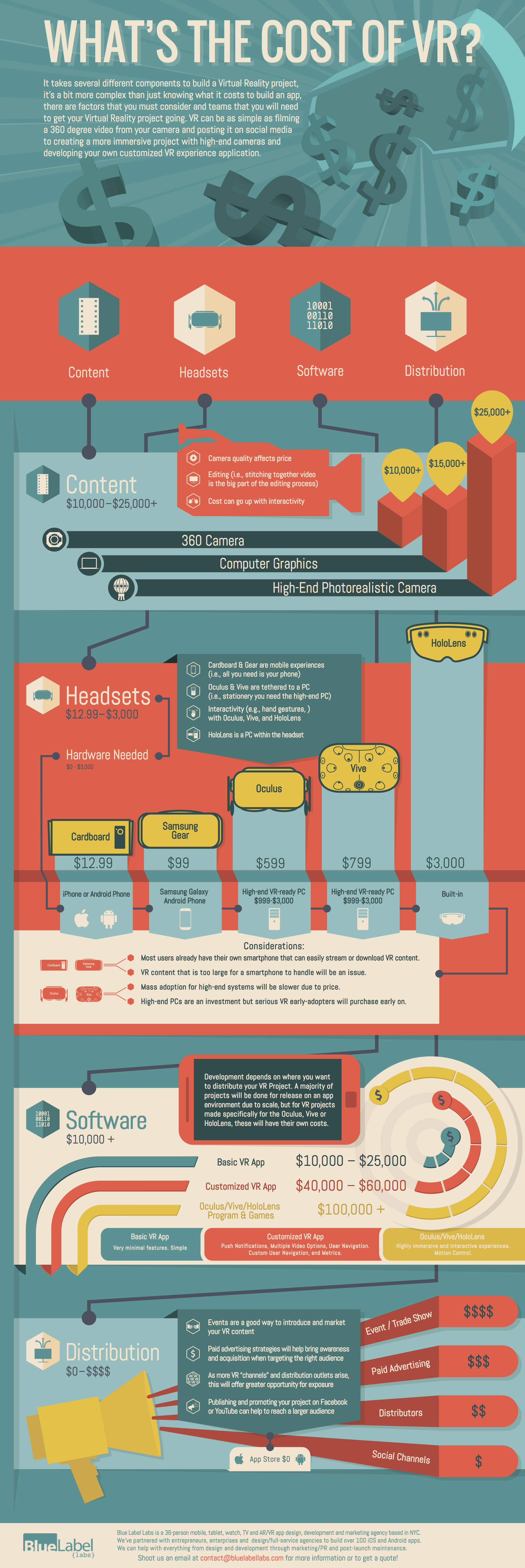Virtual reality app development costs vary depending on a number of factors. There are four essential components to consider before starting your project. Content is a major component, as well as the type of experience you will want your user to have. This will be purely dependent on the actual VR headset that they will use to view the content. Each component will have its own separate costs and considerations.
The main components of a VR project are as follows:
- Content: Determining what type of VR content you will want to produce will be key and will greatly affect the overall costs. For example, a 360-degree video differs in cost from a complex interactive computer graphic simulation. Essentially, the more realistic the content and the more interactive it is, the higher the cost.
- Headsets: Before embarking on your VR project, think about end user experience. Do you want users to be mobile, having the ability to experience it from anywhere as long as they have their mobile phone and perhaps a Google Cardboard headset? Or do you want them to have a more immersive experience and be tethered to a high-end PC with an attached headset and controllers? These decisions will all affect your costs and the end user’s costs depending on which VR headset and hardware they choose to buy.
- Software: Software is sometimes an afterthought in a VR project when in actuality it should be the first thing you think about. You will need to build software in order to deliver your VR project to users. Anything outside of a simple 360-degree video played back within a web browser will require some kind of software application. For mobile VR projects, using Google Cardboard or Samsung Gear, you will need to build a mobile app. For high-end applications such as Oculus, HTC Vive or HoloLens, create a VR program for these individual systems.
- Distribution: Last but not least, every VR project will need distribution and marketing to gain traction. This area will be highly dependent on your budget and what you are willing to spend. If you are developing a mobile app, you can distribute it in the iTunes and Google Play Stores nearly for free, although you’ll have to consider app marketing and PR. Social media also has low costs to publish. However, you may want to utilize paid social tactics for additional reach. Finding VR content channels and or events are also alternative ways to get in front of more users.
Use the following VR infographic to help guide you in your decision-making process:
A version of this post originally appeared on Idea to Appster.














